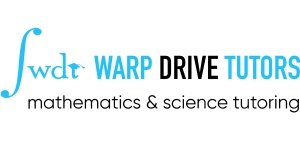IB® Standard Level Analysis and Approaches
Some Basics:
Anecdotally, this is considered to be the more challenging of the two standard level options, but the course is probably too new to know for sure! As its name suggests, the content is focused on pure mathematics, but does include some statistical techniques. The course includes one piece of coursework (Internal Assessment) worth 20% of the grade, one non-calculator exams and one calculator exam. In line with the IB®’s commitment to developing problem solving skills, many of the questions require novel applications of the taught mathematics, adding another level of challenge.
Pure topics usually covered include:
- Sequences and Series: arithmetic and geometric, sum to infinity
- Functions: exponentials and logarithms, composite and inverse, graph transformations
- Algebra: quadratics, reciprocals, discriminant, solving equations
- Trigonometry: identities and equations, radians, curves, finding additional angles, double angle formulae
- Differentiation: limits, chain, product and quotient rules, optimisation, kinematics, tangents and normals
- Integration: polynomials, trigonometry, exponentials, logarithms, by inspection
Statistics topics usually covered include:
- Graphs: histograms, cumulative frequency curves, box and whisker plot
- Regression: correlation, regression equation
- Random Variables: pdfs, expectation, Binomial, normal, linear transformations
- Probability: successive events, conditional
Typical problem areas include:
- Manipulating logarithms and splitting up exponentials, especially in proof
- Problems involving equations of lines
- Finding additional angles in trigonometric equations
- Over-reliance on calculators for trigonometry
- Word problems, especially with sequences
- Finding a suitable IA topic
How a tutor can help:
The topics in this SL option are mostly connected: logarithms are needed to answer questions about geometric sequences, the double angle formula is the secret to integrating sin 2 x and a good number of questions about exponentials lead to quadratics. The benefit of this is that you don’t actually need to know that much to do well. The drawback is that if you haven’t mastered the fundamental techniques, you won’t be able to access much of the course content. The greatest benefit of working with a tutor is the opportunity to cover topics from any point in the course, and a highly experienced tutor will be very quick to identify these topics for you.
